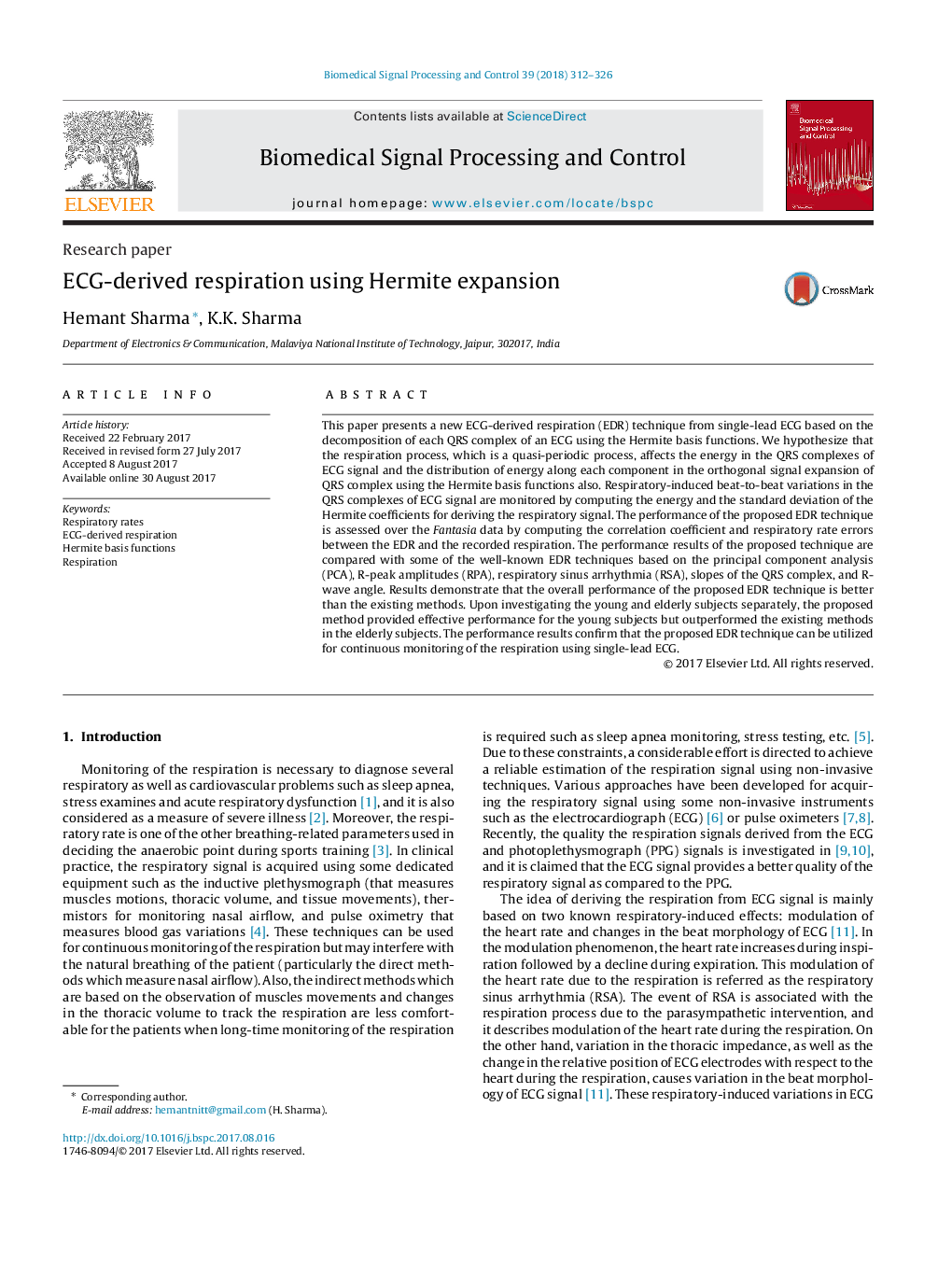| Article ID | Journal | Published Year | Pages | File Type |
|---|---|---|---|---|
| 4973489 | Biomedical Signal Processing and Control | 2018 | 15 Pages |
â¢A new technique for a reliable estimation of the respiration using single-lead ECG is presented.â¢Respiratory-induced beat-to-beat variations in the ECG signal are monitored using the Hermite basis functions.â¢Experiments are performed over a large dataset known as Fantasia.â¢The proposed algorithm showed effective performance in the younger subjects but outperformed the existing methods in the elderly subjects.
This paper presents a new ECG-derived respiration (EDR) technique from single-lead ECG based on the decomposition of each QRS complex of an ECG using the Hermite basis functions. We hypothesize that the respiration process, which is a quasi-periodic process, affects the energy in the QRS complexes of ECG signal and the distribution of energy along each component in the orthogonal signal expansion of QRS complex using the Hermite basis functions also. Respiratory-induced beat-to-beat variations in the QRS complexes of ECG signal are monitored by computing the energy and the standard deviation of the Hermite coefficients for deriving the respiratory signal. The performance of the proposed EDR technique is assessed over the Fantasia data by computing the correlation coefficient and respiratory rate errors between the EDR and the recorded respiration. The performance results of the proposed technique are compared with some of the well-known EDR techniques based on the principal component analysis (PCA), R-peak amplitudes (RPA), respiratory sinus arrhythmia (RSA), slopes of the QRS complex, and R-wave angle. Results demonstrate that the overall performance of the proposed EDR technique is better than the existing methods. Upon investigating the young and elderly subjects separately, the proposed method provided effective performance for the young subjects but outperformed the existing methods in the elderly subjects. The performance results confirm that the proposed EDR technique can be utilized for continuous monitoring of the respiration using single-lead ECG.
